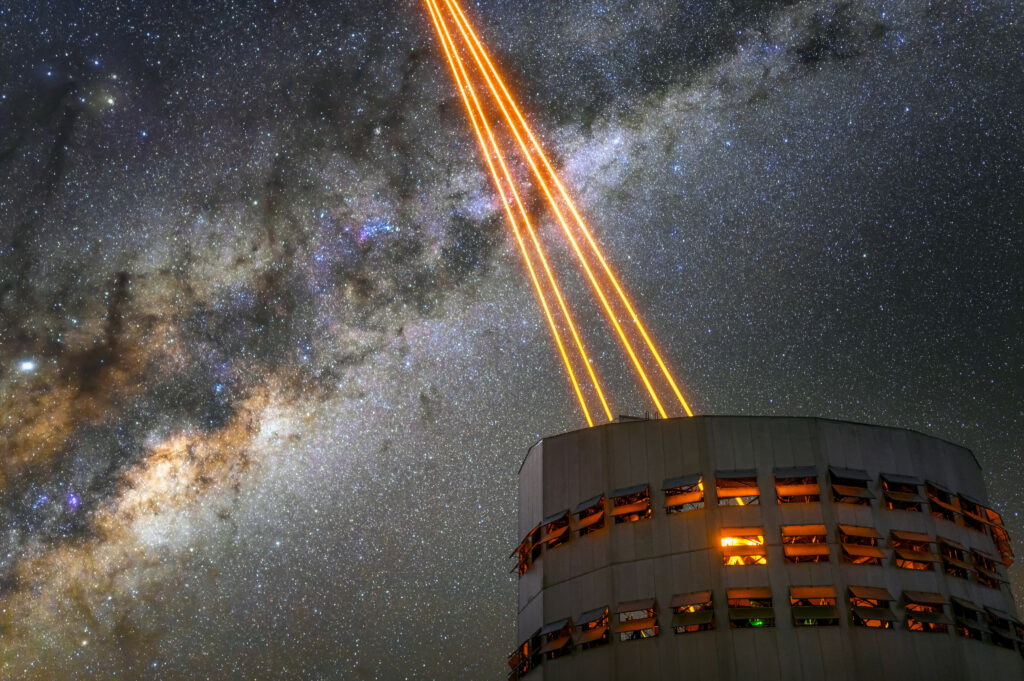This photo shows the rays of powerful lasers beating from the tower of the fourth unit of the Very Large Telescope ESO (VLT). Such a pattern can often be seen in this corner of the Atacama Desert. But where exactly are the rays directed?

The lasers’ aim is the upper layer of the Earth’s atmosphere, rich in sodium atoms, at an altitude of about 90 km. Radiation excites these atoms, causing them to glow brightly. As a result, a bright dot flashes in the sky, known as an artificial star.
Astronomers need artificial stars to calculate the parameters of the blurring of light from celestial bodies by turbulent currents in the Earth’s atmosphere. This information is used to correct blur in real time using a deformed mirror. This technique is called adaptive optics. As a result, images of observed objects get much clearer, as if they had been photographed by a space telescope.
The fourth VLT unit (its proper name is “Yepun”) is the only telescope in the complex, equipped with an artificial star device. Each of its lasers has a power of 22 watts and creates a light beam with a diameter of 30 cm. For safety reasons, the system is equipped with surveillance cameras over the sky to which the rays are directed, to turn the stars off if some aircraft appears in this region of sky.
VLT is currently the largest complex of optical telescopes on Earth in terms of total mirror area. But by the end of this decade, it will be surpassed by the Extremely Large Telescope. We recently talked about this observatory, which will help humanity take the next step towards understanding the greatest mysteries of the universe.According to https://www.eso.org
